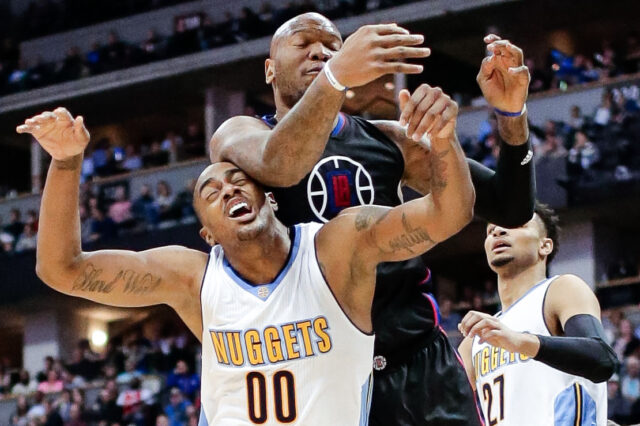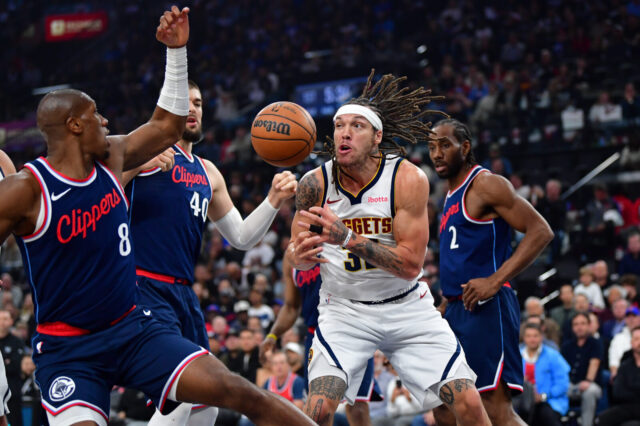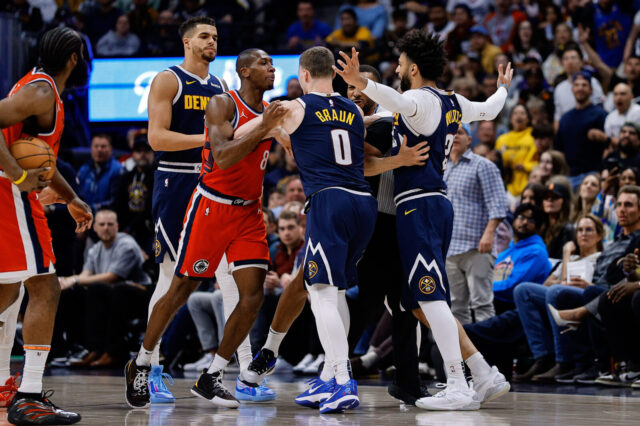If you can take a trip down memory lane to the 2018-19 season, and think, “The Nuggets sure did have a lot of close games,” you’d be correct!
The Denver Nuggets finished the 2018-19 season tied for fourth in the league with games that came down to what the NBA defines as a “clutch” game. A clutch game is when the point differential between both teams is five or less in the final five minutes of the game. That is normally when coaches will put out their closing lineup, generally the five best players on the team, to either maintain a lead or rally to snatch a win from the jaws of defeat.
No team in the NBA had a higher winning percentage than the Nuggets did in those scenarios, per NBA Stats. Whether those wins came from a game-winning basket or a game-winning blocked shot, the Nuggets consistently scrapped together wins in games where things got tight.
It’s something that could be a cause for concern with the Nuggets record this season, because they have not historically been a team that does well in clutch games. Since the 2009-10 season, the Nuggets have finished with a top-10 winning percentage in clutch games once (2012-13). For comparison, the San Antonio Spurs, a franchise known for their elite level of performance over the last 20 years, have finished in the top-10 seven times over the same time frame.
Ideally, teams won’t have to close out clutch games in the first place, but if the Nuggets are going to be one of the top teams in the league, they’re going to hopefully be in anywhere from 35-50 close games this season. There are a number of questions when it comes to clutch time for any team. How do the Nuggets win those games this year? Which players are the most conducive to end-of-game success for the Nuggets? How are the coaches going to choose those players? How will the rotations be managed during the game so the team can peak at the exact right time?
The Case for Consistency
Much like the starting lineup, there are a couple no-doubt players that are going to be part of the closing lineup. Nikola Jokic and Jamal Murray, the Nuggets two best players, are going to be on the court. The Nuggets are fortunate that the players they’ve given out max contracts to also happen to be their best players, and part of the reason they’re paid as much as they are is because they’re expected to be able to perform well in the clutch.
The other player that is a no-doubt piece of the closing lineup is Gary Harris. Harris’ ability to excel on both ends of the court makes him valuable at the end of games. He can fight through screens, rebound, and on occasion, knock down buzzer beating 3-pointers.
While he may not enjoy being part of this highlight, the player that was trucked by Wilson Chandler to set up that game-winner, Jerami Grant, might be part of the closing lineup for the Nuggets this season. It seems unlikely that Grant would close games at power forward for the Nuggets in the beginning of the season, but I expect him to grow into that role by February.
Part of the battle in the preseason with the small forward position isn’t just for the starter role – it also needs to be for the closer role. The coaching staff has to weigh in how well the other players in the closing lineup are doing as well. If Murray starts the season slow again in regards to his perimeter jumper, the Nuggets might find themselves closing with Will Barton or Juancho Hernangomez rather than Torrey Craig.
While there may be chatter about someone other than Millsap closing at power forward, it would be very surprising if he didn’t fill that role at least initially. Millsap is the veteran of the team, and his teammates rely on him more than the casual fan may realize. Even if he declines a bit from last season, his experience is what keeps him on the court in the final minutes of the game.
No matter who they decide to close at the beginning of the season, they should commit to that group for at least 20-30 games, barring health. It allows the team to adjust rotations, practice situations, and know who is going to bear the responsibility of picking up wins. These players need repetition to grow comfortable with their defensive rotations, so they are reacting rather than thinking about what to do. They need reps to grow comfortable with each other on offense, knowing the precise timing for screens, cuts, moves to the basket, and how to rebound. They need to develop trust, and rely on each other when things get the toughest.
A team like the Spurs has excelled in the clutch historically not only because they have great players, but because they had a great coach who helped facilitate excellent chemistry. They could attack opponents and their weaknesses precisely because they knew what their own strengths and weaknesses were in those final possessions. If the Nuggets follow that model, and commit to a closing group, they could develop into an unstoppable force at the end of games.
The Case for Playing Matchups
The Nuggets have the talent to field an 11-man rotation during the season. They can match up with nearly every team in the league. When they’re closing against the Lakers, they can rotate Jerami Grant and Millsap on LeBron James, leaving Jokic to bully Anthony Davis off the court. When they’re closing against the Rockets, they can rotate Torrey Craig and Gary Harris against Russell Westbrook and James Harden, keeping their best defenders on the court to check those elite guards.
With players like Jerami Grant, Michael Porter Jr., Jarred Vanderbilt, Torrey Craig, Gary Harris, Will Barton, Malik Beasley, Juancho Hernangomez, and Mason Plumlee, the Nuggets have players that can defend multiple positions. While Murray and Jokic will always close, the coaching staff can adjust to lineups they’re comfortable with to emphasize offense or defense. Check out a few of the combinations the coaching staff can assemble:
- Murray, Beasley, Barton, Juancho, Jokic – all offense
- Murray, Harris, Beasley, Porter Jr., Jokic – four shooters around Jokic
- Morris, Murray, Beasley, Harris, Jokic – four guards around Jokic
- Morris, Beasley, Grant, Vanderbilt, Plumlee – pick and roll lobs/switch
- Murray, Beasley, Porter Jr., Grant, Vanderbilt – transition
- Barton, Harris, Grant, Millsap, Jokic – switch everything/halfcourt offense
- Morris, Beasley, Cancar, Hernangomez, Vanderbilt – blowout closing lineup
The list can go on and on – by now, it should be clear that the Nuggets can match-up effectively against so many different lineups. Because they have so many good players that excel in different areas, they will always have an option to counter whatever lineup an opponent decides to throw out there.
This is where the incredible value of the offseason trade for Jerami Grant can be seen. Grant’s versatility affords him the ability to guard three positions, and that is paramount in the final minutes. As he develops chemistry with Jokić, Murray, and Harris, that will create more opportunities for him to contribute at the end of games.
Verdict
I may be on an island here, but I think the Nuggets will eventually settle on a closing lineup of Jamal Murray, Gary Harris, Jerami Grant, Paul Millsap, and Nikola Jokić. I’m hoping that Grant is able to shoot three-pointers at a 37-percent rate this year — this would allow him to play in the frontcourt alongside Millsap and Jokić.
The key to this lineup isn’t Grant’s shooting though — it’s Murray and Harris’ ability to excel from the perimeter. If Murray isn’t knocking down three or four three-pointers a game at a 40-percent rate or better, Coach Malone will need to put another shooter on the court, in the form of either Will Barton or Juancho Hernangomez.
I think Coach Malone values defense over everything else, and he's going to want to grind out possessions in the final five minutes, relying on Jokić to generate points in tandem with Murray. Jokić was able to deliver in the playoffs, and hopefully he'll be able to replicate that level of performance for a few minutes every night throughout the regular season.


